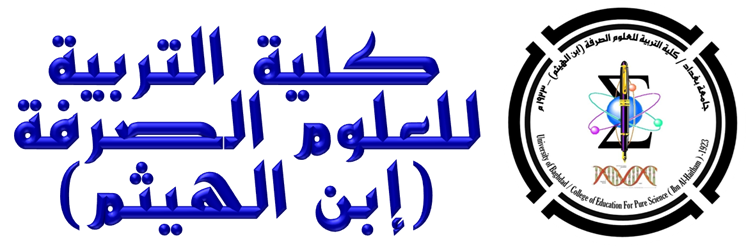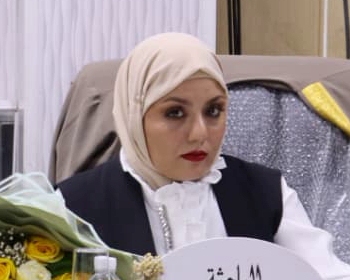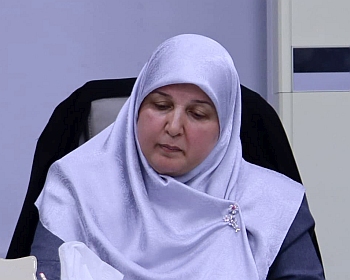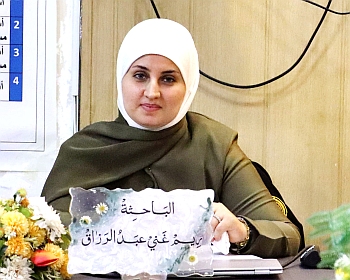ناقش قسم الفيزياء في كلية التربية للعلوم الصرفة (ابن الهيثم) رسالة الماجستير الموسومة (دراسة تأثير الطلاء على بعض الخصائص الفيزيائية للزجاج) للطالب (محمد حميد محمد رشيد) التي انجزها تحت اشراف التدريسي في القسم (أ.د. كريم علي جاسم) ونوقشت من قبل أعضاء لجنة المناقشة المبينة أسمائهم فيما يأتي:
-
أ.د. بشرى كاظم حسون (رئيسا)
-
م.د. عماد هادي خليل (عضواً)
-
أ.م.د. أسعد مجبل عباس (عضواً)
-
أ.د. كريم علي جاسم (عضواً ومشرفاً)
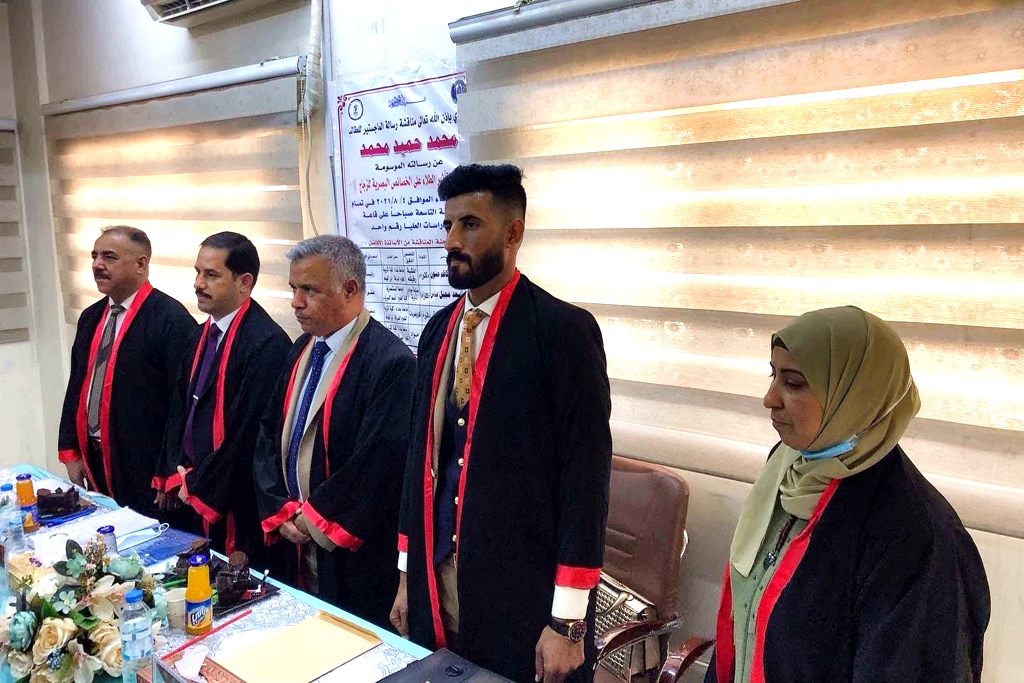
ويهدف البحث الى معرفة مدى نفاذية الاشعة الكهرومغناطيسية وتأثيرها على الصحة من خلال دخولها من نوافذ الدور والدوائر الحكومية ولتحقيق الهدف تم تحضير وجلب عدة عينات من الزجاج الخام والزجاج المطلي المستورد، وتم أجراء الفحوصات عليها.
وتم في هذا البحث تحضير الزجاج العراقي في المختبر وبألوان الابيض والاخضر الفاتح والازرق الفاتح والبرونزي بألاضافة الى الزجاج الشفاف. كما تم جلب عينات مختلفة من الزجاج المستورد المطلي بألوان مختلفة، وتم دراسة الخصائص البصرية المتمثلة بالامتصاصية والنفاذية والانعكاسية للزجاج العراقي المصنع والزجاج المطلي المستورد، وأشارت النتائج الى أن جميع عينات الزجاج المصنع والزجاج المطلي لها امتصاصيه عند مدى الطول الموجي (200-600nm) وكان أعلى أمتصاص للزجاج العراقي الشفاف ذات قيمة (4.09) عند الذروة (243) نانومتر بينما أقل أمتصاص كان للزجاج المطلي البرونزي الفاتح بقيمة (0.68) عند الذروة (314)، أما بالنسبة للنفاذية فكانت أعلى نفاذية للزجاج الشفاف العراقي وبحدود %)83.2) عند الذروة (568) نانومتر وأقل نفاذية كانت للزجاج المطلي الاخضر الغامق بسعة نفاذ %)34) عند الذروة (237) نانومتر، في حين كانت أقل أنعكاسية للزجاج الشفاف وبقيمة %)12.71) عند الذروة (565) نانومتر، أما الزجاج المطلي كانت أنعكاسيته عالية وبنسبة (%55-65) عند الذروة (234-760) نانومتر.
كما تم دراسة خصائص الانعكاسية لزجاج المرايا وبألوان الاخضر الفاتح والغامق والنحاسي الفاتح والغامق والازرق والابيض والنيلي، وأظهرت النتائج أن مرايا الاخضر الغامق لها أعلى أنعكاسية وبنسبة تصل (%97)، في حين أن مرايا الأبيض تمتلك اقل انعكاسية وبنسبة (%92) .
وتم دراسة الخصائص الكهربائية ( والمتمثلة بثابت العزل الحقيقي وثابت العزل الخيالي ومعامل الفقد ) لجميع عينات الزجاج، وأظهرت نتائج القياس أن ثابت العزل الحقيقي والخيالي ومعامل الفقد لجميع العينات يتناقص مع زيادة التردد وبنسب مختلفة ومتفاوتة، كما أظهرت أن طبيعة المادة وتراكيزها تؤثر في ثابت العزل،
وكما تم دراسة الخصائص الحرارية والمتمثلة بالتوصيل الحراري وأظهرت النتائج أن جميع أنواع الزجاج رديئة التوصيل للحرارة، وكانت قيم التوصيل الحراري للزجاج المصنع العراقي والزجاج المطلي تتناقص مع زيادة درجة الحرارة، حيث كانت أعلى قيمه (w/m.oc 0.3868) للزجاج المطلي الاخضر الفاتح وأقل قيمة (w/m.oc 0.3814) للزجاج المطلي النحاسي الفاتح.
كما تم في هذا البحث دراسة تحليل طيف الأشعة السينية للنماذج المختلفة لمعرفة العناصر المكونة للمادة ونسب تراكيزها، وأظهرت النتائج أن الزجاج الشفاف يحتوي على العناصر الرئيسية للزجاج وهي الكاربون والسيليكون والاوكسجين والألمنيوم والمغنيسيوم والكالسيوم والصوديوم بنسب معينة، بينما الزجاج المطلي أظهرت النتائج انه يحتوي على العناصر الرئيسية للزجاج وبنسب مختلفة بالاضافة الى الصبغات المسببة للالوان المختلفة ولكل لون صبغة خاصة به تتكون من عناصر معينه وهذه العناصر هي (التيتانيوم والزركونيوم والبوتاسيوم) التي تعطي اللون الاخضر الفاتح بينما ( البوتاسيوم والكروم) تعطي اللون الاخضر الغامق أما (الفانديوم والبولونيوم والبوتاسيوم ) تعطي اللون الازرق الفاتح والصبغات (الكروم والتيتانيوم ) تعطي اللون الازرق الغامق و(القصدير) يعطي اللون البرونزي الفاتح وصبغة ( البروم ) تضيف للزجاج اللون البرونزي الغامق بينما صبغة (البولونيوم ) تعطي اللون النحاسي الفاتح وصبغة (البروم ) تعطي اللون النحاسي الغامق.
ومن خلال هذا البحث تم الاستنتاج بأن جميع أنواع الزجاج تسمح بمرور الاشعة فوق البنفسجية مما يؤثر على الصحة العامة للأنسان والكائنات الحية وأوضحت نتائجنا أن الطلاء أو التلوين بألالوان المختلفة يقلل من تأثير الاشعة فوق البنفسجية.
وخلص الطالب الى التوصيات الاتية :
-
بعد معرفة العناصر المسببة للألوان نوصي بتحضير أنواع الزجاج المطلي بالألوان الاخضر الفاتح والازرق الفاتح والبرونزي الغامق والنحاسي الغامق بالمختبر
-
دراسة أنواع الزجاج المقسى لما له أهمية في الحفاظ على الصحة العامة
-
دراسة الخصائص الميكانيكية للزجاج
-
تحضير الزجاج المطلي مختبرياً ودراسة خصائصه ومقارنتها بالزجاج المطلي المستورد
-
دراسة الخصائص الفيزيائية للزجاج المدرع (ضد الرصاص)
-
دراسة الخصائص الفيزيائية للزجاج المسلح.
